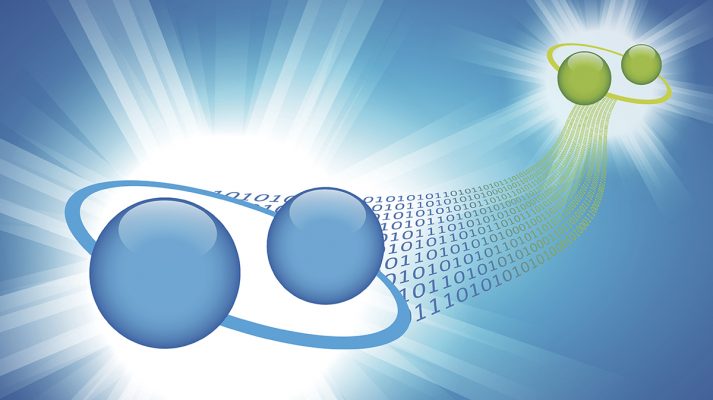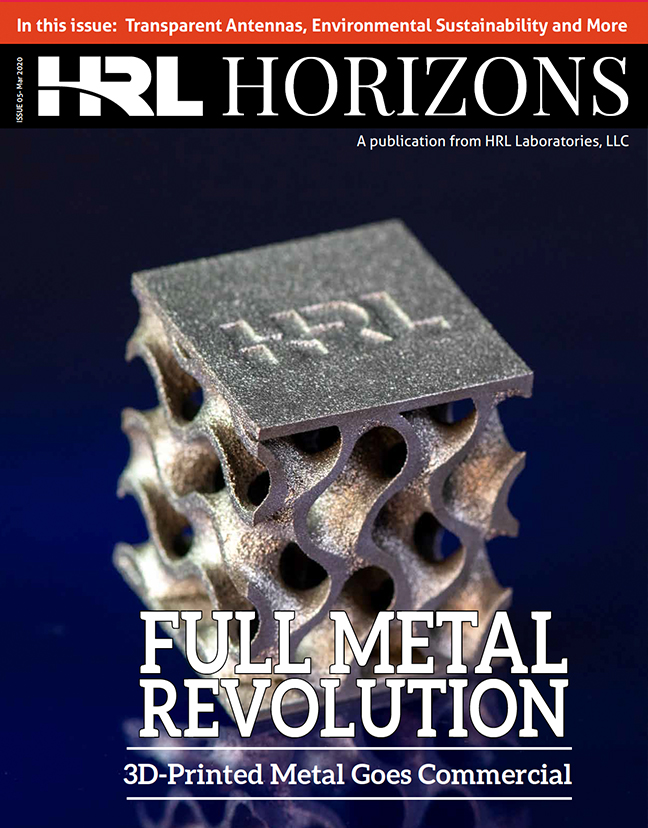
A Step Toward Revolutionary Computing by Improving Topological Material

This project will take a step closer to development of topological qubits that keep fragile quantum information safe from environmental effects. © 2018 HRL Laboratories.
Suppressing Noise Could Drastically Reduce the Number of Qubits Needed for Quantum Computation
HRL Laboratories, LLC, hopes to advance the vast potential of two-dimensional topological materials for quantum computation. With an award from the Defense Advanced Research Project Agency (DARPA), this project—Suppressing Trivial Edge Conductance in 2D Topological Materials—will take a step closer to development of topological qubits that keep fragile quantum information safe from environmental effects.
“Our aim by improving 2D quantum-well topological materials will be to provide a novel building block for quantum computation that does not need quantum correction to mitigate noise,” said Minh Nguyen, HRL’s principal investigator. “If we can suppress edge conductance in this material, it can then be used in devices and circuits that can protect quantum information from environmental fluctuations and disturbance.”
“Imagine the topological material as a doughnut with a qubit encoded in the hole. Environmental disturbances are squeezing, pressing, or deforming the doughnut, but the doughnut’s identity—the hole storing quantum information—remains consistent, even if the doughnut changes drastically to the shape of a mug with a handle. The beauty of topological encoding is that the qubit stays safe and does not change with deformation. With these topological qubits, quantum computation could be accomplished with far fewer total qubits than are needed in other approaches that require extra qubits for quantum error correction.”
Most current quantum computational approaches rely on one qubit for quantum calculation and 50-100 qubits to correct fluctuations caused by the environment. They do not protect the data from disturbances.
The specific goal of this project is to unambiguously reveal the quantum spin Hall regime and helical edge states of 2D topological materials and suppress non-topological edge conductance, a source of environmental noise, to a low enough level to observe long-lived quantum excitations, which preserves the sensitive information in the qubit.
“The non-topological edge conductance can be regarded as a show stopper for the 2D quantum well material system. If we succeed, it will revitalize the promise of 2D topological materials and reopen potentially simpler and more scalable device designs for topological qubits than those currently being pursued. Readily scalable topological operations could revolutionize the quantum information field,” Nguyen said.
HRL Laboratories, LLC, Malibu, California (hrl.com) is a corporate research-and-development laboratory owned by The Boeing Company and General Motors specializing in research into sensors and materials, information and systems sciences, applied electromagnetics, and microelectronics. HRL provides custom research and development and performs additional R&D contract services for its LLC member companies, the U.S. government, and other commercial companies.
Media Inquiries: media[at]hrl.com, (310) 317-5000

